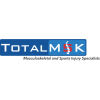-
About
- About Listly
- Community & Support
- Howto
- Chrome Extension
- Bookmarklet
- WordPress Plugin
- Listly Premium
- Privacy
- Terms
- DMCA Copyright
- © 2010-2025 Boomy Labs

 Terry
Terry
Listly by Terry
Myofascial Release therapy consists of a group of techniques to treat musculoskeletal and myofascial pain. The techniques aim to identify and treat myofascial trigger points (TrP)s directly or indirectly. Each method works differently, and in some cases, self-treatment or SMR is possible using SMR tools such as foam rollers, massage therapy balls. The list contains articles on such techniques and injury prevention strategies.
Source: https://www.totalmsk.co.uk/msk-blog/selftreatment/myofascial-release.html

Foam rolling are just one method or SMR tool for performing self myofascial release (SMR). Like Myofascial release (MFR) performed by a therapist, there are many techniques or tools. No one tool fits all purposes, and so it helps to understand how to best use each tool and foam rollers are no different. Foam Roller Massage - SMR - An MSK Therapy perspective.

No self myofascial release (MFR) tools can replace a good therapist, but it is possible to get good results by applying the correct tools in the proper context and with the right technique. Other SMR tools include massage balls, spiky balls and trigger point therapy (TPT) tools, and the article discusses these. Self Trigger-point-therapy SMR - An MSK Therapy perspective

When used correctly, a spiky massage ball can prove very effective for self-myofascial release (SMR). There are slight variations in how one applies the myofascial release (MFR) technique. The following article explains how one can perform spiky massage ball self-myofascial release (SMR) on the calves (Gastrocnemius). Self-Myofascial Release (SMR) - calves (Gastrocnemius)

One can also use a spiky massage ball for myofascial release (MFR) on the Soleus muscle (one of the calf muscles). The technique is slightly different to that for the other calf muscle, the Gastrocnemius, but it is still quite an effective self-myofascial release (SMR) technique. Self-Myofascial Release (SMR) - calves (Soleus)

It is relatively easy to treat the hamstrings using a spiky massage ball for myofascial release (MFR). Self-myofascial release (SMR) with a spiky ball requires one to be sitting and very little equipment. Self-Myofascial Release (SMR) - legs (hamstrings)

The upper leg's quads (quadricep) muscles are not suitable for myofascial release (MFR) using a spiky massage ball. Foam rollers can also be painful as the quads are usually under load (tense) when in a plank type position for foam rolling. Massage sticks or muscle roller sticks can be good for self-myofascial release (SMR). Self-Myofascial Release (SMR) - legs (quadriceps)

The basic running/sports injury prevention article covers some of the factors that can lead to injury and some strategies for injury prevention. There is a more detailed article that covers injury mechanisms in more depth. Running sports injury prevention

Having an understanding of injury mechanisms can prove extremely useful in preventing injuries. The following article builds more depth on the basic running sports injury prevention article. Sports injury prevention

Trigger Point Dry Needling is a form of myofascial release therapy that works specifically with myofascial trigger points and uses fine solid-core filament needles. The technique can prove highly effective in treating myofascial pain and releasing tense tissues. Also with the right skill and technique the method with minimal discomfort.
